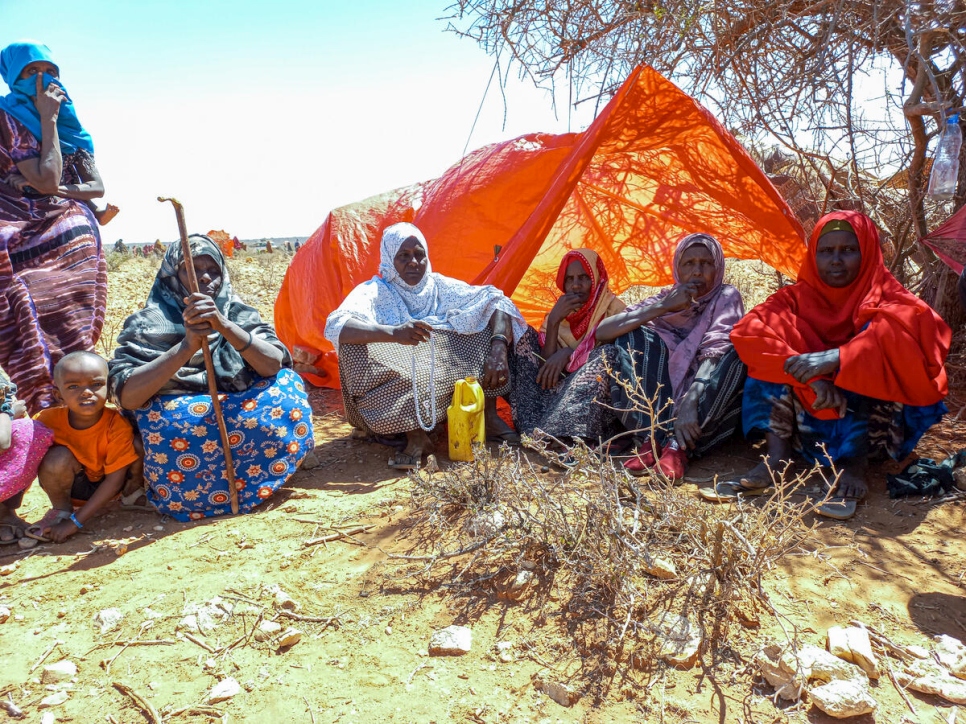As hundreds of thousands flee Somalia to Ethiopia, UN and partners call for urgent funding
As needs grow and refugees continue to arrive, UN agencies and partner organizations today appealed for US$116 million to provide life-saving assistance to Somali refugees seeking safety in an extremely remote area of Ethiopia’s Somali region.

Somali refugees sit near a makeshift shelter after crossing the border into Ethiopia’s Somali region
to escape recent clashes. © UNHCR/Nimo Ahmed Abdullahi
Since hostilities erupted last month in the city of Laascaanood, in the Sool region, Somalia, hundreds of thousands of people have been displaced within Somalia, and close to 100,000 are estimated to have crossed the border into Ethiopia to escape the violence.
Most of the new arrivals in Ethiopia are women, children, older people and people with specific needs, who arrive with nothing, scared and hungry. Among them are a high number of unaccompanied and separated children, which heightens protection concerns.
The humanitarian situation on the ground is dire, with moderate acute malnutrition observed in many children under five and in pregnant and nursing mothers. There is a high risk of disease outbreaks, with worrying reports of measles cases in the area.
“The Ethiopian Government and local communities have generously welcomed the refugees, extending any help they can, but with the continuing arrivals, resources are already severely overstretched,” said Clementine Nkweta-Salami, UNHCR’s Regional Director for the East and Horn of Africa and Great Lakes Region. “We need additional funding to ramp up delivery of aid and address the acute and growing humanitarian needs.”
The funds will help provide urgently needed shelter and relief items, such as blankets, mats, and mosquito nets. Food will also be provided to all families in need through monthly general food distributions. Emergency food assistance is already being provided to meet the most immediate food and nutrition needs of new arrivals.
With the high numbers of women and children among the refugees, support will prioritize child protection services, prevention and response to gender-based violence, documentation, and education.
Child-friendly spaces will be established to help with children’s well-being. Tracing and family reunification services and alternative care arrangements for separated children will be undertaken.
Refugee settlements will be established in two sites, Mirkan and Docmo, thanks to land provided by the Ethiopian government. Investments are planned to expand the existing government health clinics, supply medicines and medical care, and establish nutritional support programmes.
“This influx of refugees is happening at the worst time possible, in an extremely remote area of Ethiopia’s Somali region which is also one of the most severely hit by the worst drought in 60 years,” said Michael Dunford, WFP’s Regional Director for East Africa. “To save lives, we need funding now.”
Funding levels in Ethiopia remain critically low, and the response to the drought in the Horn of Africa is under severe pressure due to the rapidly rising needs. Ethiopia already hosted 884,000 refugees and asylum-seekers – predominantly from South Sudan, Somalia, and Eritrea – before the most recent arrivals.
As refugees continue to flee, the needs will increasingly outstrip the resources available. We are urgently appealing to the international community to swiftly mobilize sufficient resources to allow aid agencies to continue to support the Ethiopian government to provide a coordinated, effective and life-saving response.
Note for editors
The organizations launching the appeal include UNHCR, the UN Refugee Agency, the World Food Programme (WFP), the UN Children’s Fund (UNICEF), UN Population Fund (UNFPA), the World Health Organization (WHO), the International Organization for Migration (IOM), and non-governmental organizations GOAL, Norwegian Refugee Council (NRC), Organization for Sustainable Development (OSD) and OWS Development Funds (OWS-DF).
Source:unhcr.org/uk/news/press/
